The Bay of Plentzia, on the Basque coast, is not only a place of extraordinary natural beauty, but also a challenging environment that tests those who wish to work in harmony with the sea.
In this corner of the Cantabrian Sea, waves and currents have shaped the coastal and underwater landscape for centuries, creating a dynamic and often unpredictable environment. For us, who decided to age our wines underwater, these extreme conditions represented a unique challenge that led to the creation of a innovative underwater infrastructure : a underwater winery-artificial reef made of concrete and steel.
Why build underwater infrastructure?
 The Cantabrian Sea is known for its strong waves, especially during winter storms. Waves in the Bay of Plentzia can reach heights of over 5 meters, generating energy that would easily damage unprotected submerged wine bottles. To ensure the integrity of these bottles and at the same time harness the potential of the marine environment, we decided to build a robust structure that would fulfill two main objectives: protect the wine and benefit the marine ecosystem.
The Cantabrian Sea is known for its strong waves, especially during winter storms. Waves in the Bay of Plentzia can reach heights of over 5 meters, generating energy that would easily damage unprotected submerged wine bottles. To ensure the integrity of these bottles and at the same time harness the potential of the marine environment, we decided to build a robust structure that would fulfill two main objectives: protect the wine and benefit the marine ecosystem.
An artificial reef for wine and marine life
The design of our infrastructure was not limited to protecting the bottles. From the outset, we conceived our project as an experiment in sustainability , creating a artificial reef that would not only withstand the force of the sea, but also foster marine life.
An artificial reef is a human-made structure designed to replicate the functions of a natural reef. These structures, made of materials such as concrete, steel, or even sunken ships, provide shelter, food, and breeding grounds for various marine species. In our case, we used reinforced concrete and steel modules specifically designed to withstand the currents and waves of the Cantabrian Sea, while their cavities and rough surfaces encouraged colonization by algae, corals, and other organisms.
Proven ecological benefits
 The artificial reef we built in Plentzia has proven to be a model of sustainability and marine resilience, according to studies conducted between 2012 and 2017.
The artificial reef we built in Plentzia has proven to be a model of sustainability and marine resilience, according to studies conducted between 2012 and 2017.
Our modules (artificial reef pieces) have not only served as a refuge for local species, but have also acted as habitats for bioindicator species sensitive to environmental disturbances caused by climate change, such as Calliblepharis ciliata and Gelidium corneum .
In the biological monitoring report of the underwater winery, more than 100 different marine species were documented colonizing the structures, including fish such as Scorpaena porcus , invertebrates such as shrimp, and algae that indicate good environmental quality. This success reinforces the importance of artificial reefs as conservation tools in areas affected by human activities and climate change.
Artificial reefs around the world
Our reef is just one among many. In Japan, artificial reefs have helped restore fish populations after decades of overfishing. In the United States, sunken ships in the Gulf of Mexico have created thriving ecosystems. Even small artificial reefs, like the one created in the Bay of Plentzia by the underwater winery, can have a huge impact at the local level, acting as biodiversity micro-reserves.
A meaningful challenge
 For Crusoe Treasure, the project to build an artificial reef under the Cantabrian Sea was not simply a technical challenge; it was an opportunity to demonstrate that Sustainability and innovation can go hand in hand . Every bottle that leaves our underwater cellar not only tells a story of underwater aging, but also of its contribution to the marine ecosystem.
For Crusoe Treasure, the project to build an artificial reef under the Cantabrian Sea was not simply a technical challenge; it was an opportunity to demonstrate that Sustainability and innovation can go hand in hand . Every bottle that leaves our underwater cellar not only tells a story of underwater aging, but also of its contribution to the marine ecosystem.
Thus, we face the rugged Cantabrian Sea with the certainty that our infrastructure not only protects our wine, but also the wealth of marine life that is part of our home.
And now that you know more about us, would you like to try one of our treasures?


